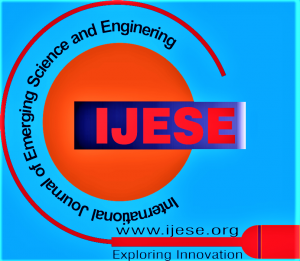![]()
A Study of Application of Digital Image Processing in Medical Field and Medical Image Segmentation by Edge Detection
Tanusree Saha1, Kumar Vishal2
1Tanusree Saha, Research Scholar, Department of Computer Science & IT, Magadh University, Bodh Gaya, Bihar, & Assistant Professor, Department of IT, JIS College of Engineering, India.
2Dr. Kumar Vishal, Assistant Professor, Department of Mathematics, Magadh University, Bodh Gaya (Bihar), India.
Manuscript received on 01 March 2024 | Revised Manuscript received on 12 March 2024 | Manuscript Accepted on 15 March 2024 | Manuscript published on 30 May 2024 | PP: 3-8 | Volume-12 Issue-4, March 2024 | Retrieval Number: 100.1/ijese.G989013070624 | DOI: 10.35940/ijese.G9890.12040324
Open Access | Editorial and Publishing Policies | Cite | Zenodo | OJS | Indexing and Abstracting
© The Authors. Blue Eyes Intelligence Engineering and Sciences Publication (BEIESP). This is an open access article under the CC-BY-NC-ND license (http://creativecommons.org/licenses/by-nc-nd/4.0/)
Abstract: There has been significant recent development in the domain of image processing and associated imaging techniques. Medical imaging is the practice of capturing images of various body parts for diagnostic or investigative purposes. The number of imaging procedures performed each week is in the millions. This study presents the promising image processing methods currently in use in the medical field. The rapid expansion of medical imaging can be attributed to advancements in image processing methods, including image recognition, enhancement, and analysis. Utilised in the diagnosis and treatment of patients, image processing techniques have proven to be of immense benefit to surgeons and physicians. The explosion of clinical medical devices is primarily attributed to the combination of hardware and image processing techniques, both of which have made significant contributions to medical progress. In recent years, Image segmentation via edge detection has played a vital role in extracting important features of images, such as corners, lines, and curves, to recognise object boundaries, which in turn helps medical experts detect diseases in medical analysis and patient care.
Keywords: Non-Intrusive Techniques; Human Anatomy; Digital Image Processing; Diagnosis
Scope of the Article: Image Analysis and Processing
